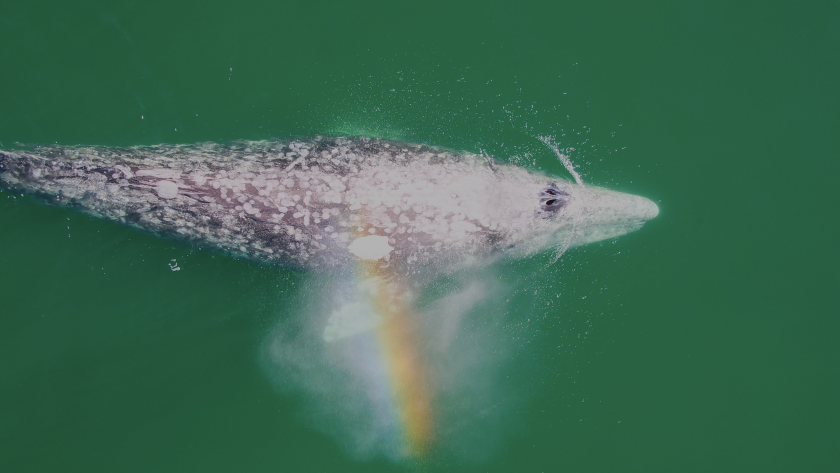Washed Ashore
An international team of marine biologists investigates the mysterious and sudden die-off of the Pacific gray whale.
- Share via
We were drawn to this story for different reasons, which ultimately was the perfect mix of relatable experience and passion to work on a film about the marine mammal research community. Ley grew up with parents that were sailors. She was raised with a deep appreciation for the ocean and everything in it. When she saw all the headlines about gray whales stranding along the West Coast, she wanted to draw more attention to the issue. Cameron studied ecology at university in Canada, which led to a complete admiration for wildlife both on land and in the ocean. When he learned about this story, he was also immediately inspired to shed light on the plight of the gray whales.
We realized how small the gray whale research community is from the early days of development. Everyone from Mexico to Alaska seemed to know each other and they all had worked together for decades. We followed these marine biologists in real time as they made discoveries about why gray whales are dying. The film opens with a scene of a whale curiously playing with people on a boat, which allows viewers to connect intimately with these creatures. The reasons why gray whales are dying are introduced throughout the film to lead to the revelation of climate change as the driving factor. Drone videography is used to give a feeling of scale, which is quantified in motion graphics. We built tension through action scenes on the water, followed by slow-paced moments of stranded dead whales, which makes space for the emotional impact of the story. We intentionally chose to cast mainly women and people of color because they are often underrepresented in the scientific community.
Our hope is that this film allows people to fall in love with gray whales and the people trying to protect them.
We realized how small the gray whale research community is from the early days of development. Everyone from Mexico to Alaska seemed to know each other and they all had worked together for decades. We followed these marine biologists in real time as they made discoveries about why gray whales are dying. The film opens with a scene of a whale curiously playing with people on a boat, which allows viewers to connect intimately with these creatures. The reasons why gray whales are dying are introduced throughout the film to lead to the revelation of climate change as the driving factor. Drone videography is used to give a feeling of scale, which is quantified in motion graphics. We built tension through action scenes on the water, followed by slow-paced moments of stranded dead whales, which makes space for the emotional impact of the story. We intentionally chose to cast mainly women and people of color because they are often underrepresented in the scientific community.
Our hope is that this film allows people to fall in love with gray whales and the people trying to protect them.
